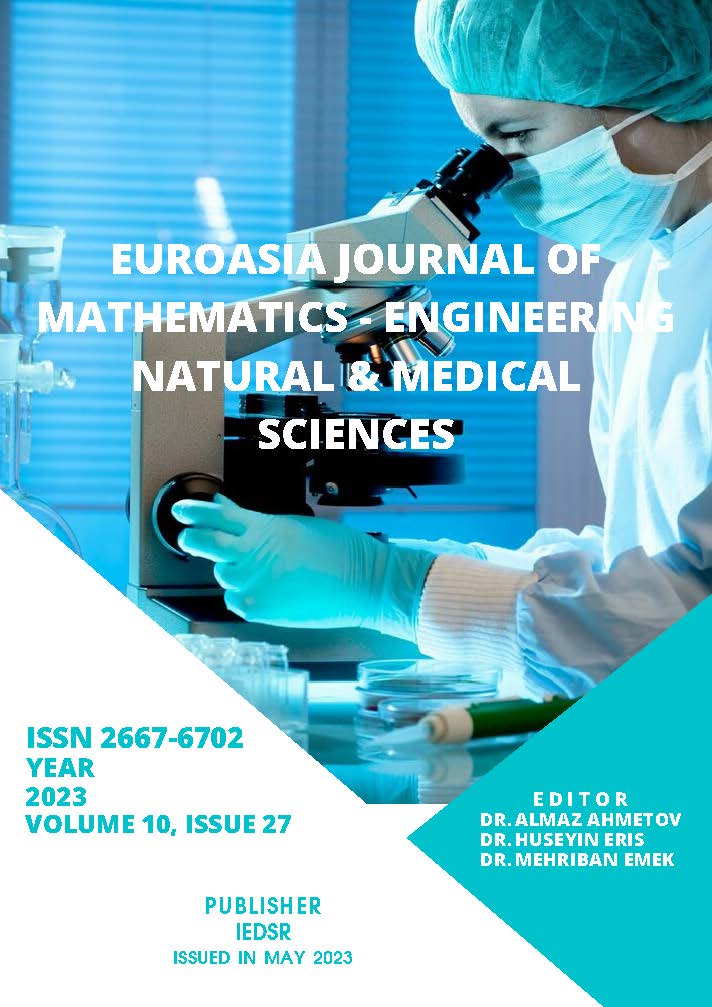Investigation of Fracture Toughness of Carbon Fiber Epoxy Composite Pıpes Exposed to Hydrothermal Aging
DOI:
https://doi.org/10.5281/zenodo.7968908Keywords:
Hydrothermal Aging, Epoxy, Fracture Toughness, Charpy Impact TestAbstract
New materials produced by combining two or more materials at macro level with the aim of combining different material properties in a single material or adding a new feature are referred to as "Composite Materials". The composite material can basically consist of the main structure and reinforcement element called matrix. However, there are many production methods of composite materials such as hand lay-up, resin transfer, spraying, molding and filament winding. One of the parameters that affect the mechanical and thermal properties of composite materials is environmental conditions. Changes in properties occur when composite materials are exposed to environmental conditions such as temperature and humidity for a long time. This process of change in composite material properties over time is called aging. Hydrothermal aging process is also an example of environmental conditions where temperature and humidity effects can be seen together and materials can be exposed to these effects. In the study, epoxy resin, which constitutes the structural integrity of the fibers and has a wide field of study in the literature, has been used as the matrix phase by performing the distribution of the load between the fibers well. Carbon fiber is used as reinforcement material. Composite pipes were produced with a ± 55 ͦ winding angle using the filament winding method. The produced carbon fiber epoxy composite samples were subjected to hydrothermal aging process for one week, two weeks and three weeks, and fracture toughness tests were applied to the samples with the Charpy impact tester after the aging process. With this experiment, the test phase was carried out to test the composite material against impact loads and the fracture toughness was tested during these stages. In addition, this paper is conducting research and the mechanism of damage caused by the Charpy impact experiment has been observed.
References
Kılıç, E. (2006). Kompozit Malzemeden Yapılan Yaprak Yayların Analizi. Doctoral Dissertation, DEÜ Fen Bilimleri Enstitüsü.
Samanci, A., Avci, A., Tarakcioglu, N., & Şahin, Ö. S. (2008). Fatigue Crack Growth Of Filament Wound GRP Pipes With A Surface Crack Under Cyclic İnternal Pressure. Journal Of Materials Science, 43(16), 5569-5573.
Zhu, L., Sun, B., Hu, H., & Gu, B. (2010). Constitutive Equations Of Basalt Filament Tows Under Quasi-Static And High Strain Rate Tension. Materials Science And Engineering: A, 527(13-14), 3245-3252.
Avci, A., Şahin, Ö. S., & Tarakçioğlu, N. (2007). Fatigue Behavior Of Surface Cracked Filament Wound Pipes With High Tangential Strength İn Corrosive Environment. Composites Part A: Applied Science And Manufacturing, 38(4), 1192-1199.
Şeker, A. (2010). Epoksi Reçine/Sepiyolit Kompozitlerinin Hazırlanması Ve Karakterizasyonu. Doctoral Dissertation, Selçuk Üniversitesi Fen Bilimleri Enstitüsü.
Günöz, A. (2019). Nanopartikül Takviyeli Karbon Epoksi Borularda Hidrotermal Yaşlandırmanın Isıl İletkenliğe Etkisi. Yüksek Lisans Tezi, Mersin Üniversitesi, Mersin.
ASTM E399-20a, Metalik Malzemelerin Doğrusal-Elastik Düzlem Gerilme Kırılma Tokluğu için Standart Test Yöntemi, ASTM International, West Conshohocken, PA, 2020, www.astm.org
Sevinç, B. (2007). Geleneksel Charpy Vurma Deneyi Verilerinin Labvıew Programı Kullanılarak Elde Edilmesi Ve Değerlendirilmesi, Yüksek Lisans Tezi, Muğla.
Özbey, M., Gürbüz, M., & Karakurt, U. Hidrofobik çark yüzeylerinin santrifüj tip bir pompa performansına etkilerinin deneysel incelenmesi. Gazi Üniversitesi Mühendislik Mimarlık Fakültesi Dergisi, 36(1), 267-274.
Downloads
Published
How to Cite
Issue
Section
License
Copyright (c) 2023 Euroasia Journal of Mathematics, Engineering, Natural & Medical Sciences

This work is licensed under a Creative Commons Attribution-NonCommercial 4.0 International License.

